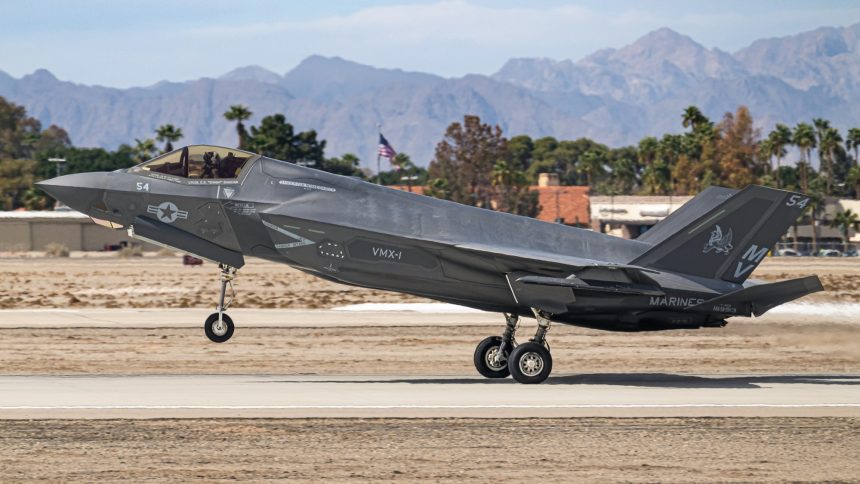On the occasion of the recent airshow at MCAS Yuma, we had the opportunity to interview the Commander of Marine Operational Test & Evaluation Squadron (VMX) 1.
After a three-month winter break, airshow season is once again underway in North America. The Airshow at MCAS Yuma is one of the first major shows of the airshow season, and it is highly anticipated by aviation enthusiasts across the country.
With Yuma being a major airbase for U.S. Marine Corps aviation, it was only natural that the show organizers were able to provide an excellent mix of U.S. Marine aviation assets. Flying displays of the MV-22B Osprey, as well as a USMC Marine Aviation Capabilities Demo, featuring Viper and Venom Attack Helicopters, F/A-18D, F-35B and KC-130J aircraft, took to the skies, during the one-day event.
Additional Marine aviation acts, featuring an F-5N demonstration with a handsome flyby of four F-5s in formation, were included in the schedule. Lastly, the F-35B West Coast Demo Team exhibited the amazing power and versatility of the STOVL variant of the F-35.
A significant portion of the Marine aviation resources participating in the Yuma Airshow belonged to a very unique and critical Yuma based squadron, VMX-1. VMX-1, or Marine Operational Test and Evaluation Squadron One’s mission is to conduct operational test and evaluation of all Marine Aviation platforms under the authority of the Director, Operational Test and Evaluation Force. They create, document, and disseminate initial tactics, techniques and procedures for Marine Aviation platforms and systems.
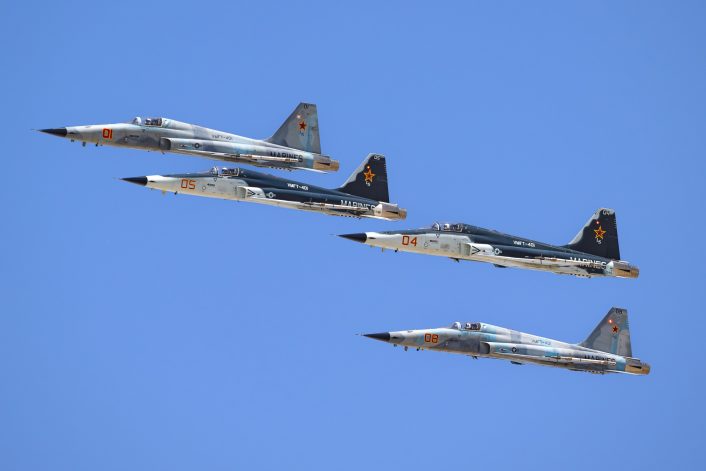
In coordination with MAWTS-1*, and Marine Aviation, VMX-1 supports concept development and refinement of Marine aviation tactics, techniques, and procedures. Lastly, the VMX-1 team coordinates and conducts government sponsored experimentation and tactical demonstrations as directed by the Marine Deputy Commandant for Aviation.
*MAWTS-1 – Marine Aviation Weapons and Tactics Squadron One – provides standardized advanced tactical training and certification of unit instructor qualifications to support Marine Aviation training, as well as development and employment of aviation weapons and tactics.
The organization of VMX-1 consists of experienced aircrew and maintainers to support the operational test of key Marine capabilities. Equipped with uniquely instrumented aircraft and an internal C4I, (Command, Control, Communications, Computers and Intelligence) department, VMX-1 conducts operational test to ensure emergent capabilities are appropriately vetted for both effectiveness and suitability in realistic combat environments.
In addition to conducting formal operational test, VMX-1 collaborates with MAWTS-1, ADT&E (Aviation Development Test and Evaluation), the MCWL (Marine Corps Warfighting Laboratory), and numerous DoD innovation centers to ensure Marine Aviation is at the forefront of warfighting modernization. VMX-1 also integrates across the joint and partner force to increase interoperability and expedite the development of new technologies and tactics for the Fleet Marine Forces.
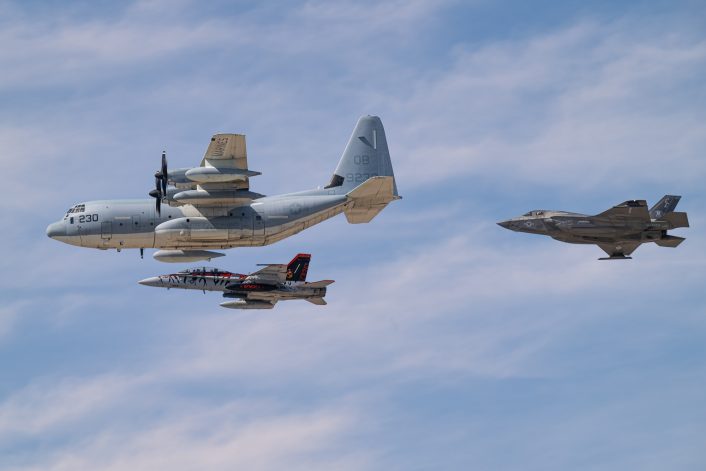
In 2025, VMX-1 will lead Marine aviation into a new era of warfighting capability and technological superiority. The squadron will conduct operational test and evaluation on systems and weapons for the F-35B, MV-22B, CH-53K, AH-1Z, UH-1Y, and the MQ-9A, from its home station of MCAS Yuma. The squadron will conduct multiple detachments and limited deployments to evaluate new technologies and will continue to partner with sister service operational test organizations, tri-service weapons schools, and government research organizations.
The current squadron commander of VMX-1 is Colonel John “Ike” Dirk. Ike is a graduate from the United States Naval Academy, where he was a Trident Scholar. In addition, Col. Dirk is a graduate of the Weapons and Tactics Instructor Course, as well as U.S. Naval Test Pilot School. As a test pilot in the F-35 Integrated Test Force, Col. Dirk served as Project Officer for the final F-35B ship trial during System Development and Demonstration, aboard the USS America. Fleet assignments for Col. Dirk include VMFA-211, Executive Officer and Commanding Officer of VMFA-122.
Colonel Dirk has accumulated over 2000 flight hours and 270 shipboard landings in 25 aircraft models including all F-35 variants, F/A-18, AV-8B, JAS-39, and MIG-15.
The Aviationist was most privileged to be able to spend some time and interview Colonel John “Ike” Dirk of United States Marine Corps Air Station Yuma, AZ, who assumed command of VMX-1 in October 2024.
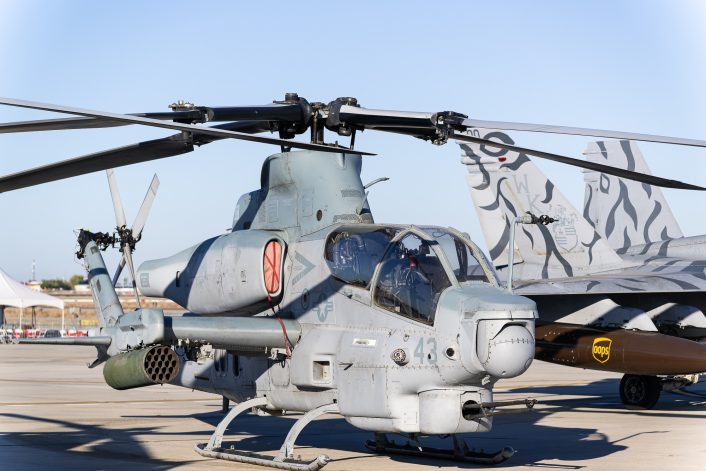
Question: First things first, we would like to learn a little about your background. If you can please tell us where you are from, where did you go to school, and how this led to a career as a U.S. Marine Aviator?
Answer: I grew up in Fort Worth, Texas. Attended the U.S. Naval Academy (Physics Major), class of 2002, and selected Marine Aviation out of there.
Can you please elaborate on your wide variety of aircraft types flown in your career? How many total hours do you have across all types, your favorite types flown, and why?
I grew up as young fleet aviator, initially flying the AV-8B. Thanks to my time as a developmental test pilot and the training that went along with that, I have flown around 25 different models of aircraft, totaling around 2,050 hours. Everyone loves their first real airplane, so I will always have a soft spot for the AV-8. I have flown a handful of the modern fighters AV-8B, F/A-18A-D, F/A-18E/F, F-35A/B/C, F-16, JAS-39, and of those there is no airplane I would rather go to war in than an F-35, fun to fly, very capable, takes care of you. As far as odd-balls, I had the opportunity to fly the HU-16 Albatross flying boat, and it was one of my favorites. Really fun and challenging, but a fascinating design that really hit its purpose.
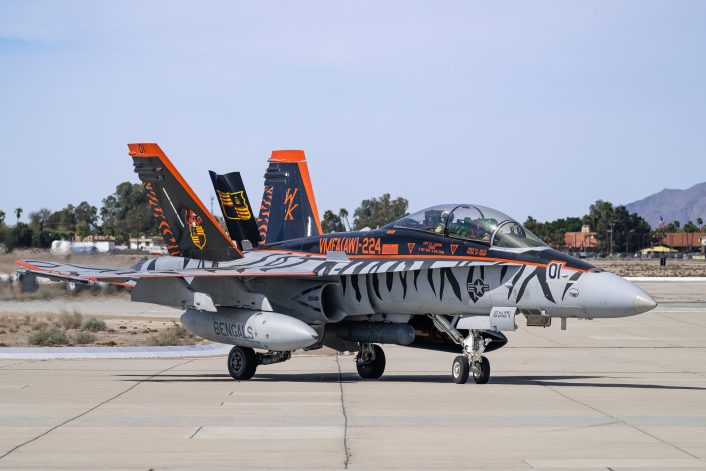
I have been quite fortunate with many of my previous Marine F-35 interviewees, as they have had flight experience in all three models of the F-35. Therefore, can we delve into your time spent in each of the models of F-35s? What was your role while flying the A, B and C models? Lastly, let’s talk about your experience and work as a test pilot in the F-35 Integrated Test Force, and as a Project Officer for the final F-35B ship trial aboard the amphibious assault ship, USS America.
As a Developmental Test Pilot, I flew all three variants of F-35. As a fleet pilot and OT pilot I flew the F-35B exclusively, and commanded the USMC’s third operational F-35B squadron, VMFA-122, therefore I have the most flight time in the B variant.
I first started flying F-35s at the end of System Development and Demonstration at the Naval Air Station Patuxent River side of the ITF (Integrated Test Force). Fun time to be in the program as we were really ringing out the capability of the jet during the end of the initial developmental effort. Fighters are always being improved, but during that EMD/SDD (Engineering, Manufacturing and Development/System Design and Development) period were lots of firsts and what we call “end points” in flight test. Some of the most fun and intellectually challenging flying I have been a part of.
At the end of my time there, I was the project officer for the final SDD Sea Trial for the F-35B. We did about three weeks of testing on the USS America, finalizing the clearances that were going to be released to the fleet for shipboard ops. VMX-1 was there as well, doing parallel operational testing. I never expected then to be the CO of VMX-1.
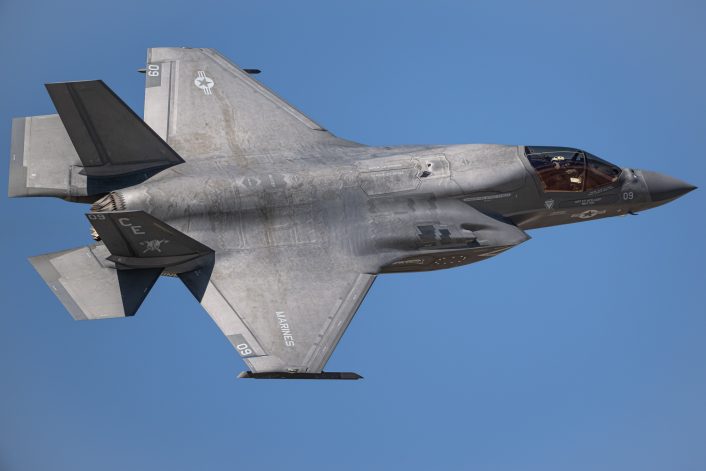
Readers really enjoy hearing about the differences when flying the various models of the F-35. Can you describe the nuances of flying each one of the models? Additionally, do you have a favorite, and why?
The most significant observation I have is that we spent a lot of time making the airplanes the same, and from a pilot perspective they are very similar. If you don’t look behind you, you can barely tell which one you are in. Cockpit controls are all the same, most of the systems are the same. That is a huge benefit as we move pilots from B to C and back in the USMC, or between services A-B-C. It’s really quite remarkable how similar they are to operate.
As for a favorite, I started saying when I was at OSD (Office of the Secretary of Defense) “they are all my favorite.” They each have some uniqueness related to their design mission. You get more fuel in the A/C, bigger wing area in the C but bigger jet, land anywhere in the B but less fuel. From a fun of flying standpoint, you can’t beat STOing off in a few hundred feet and coming back in for a vertical landing.
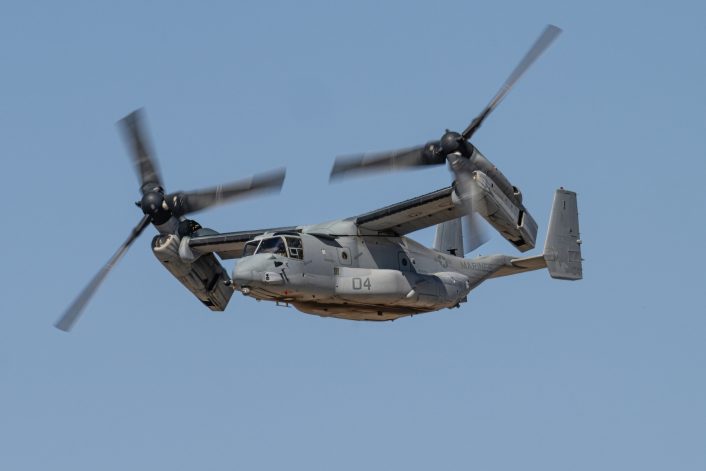
Before we talk about VMX-1’s mission and your current assignment as Commanding Officer, can you please provide details regarding your experience, first as Executive Officer, then Commanding Officer, of VMFA-122? What were your challenges in the transition from the legacy F/A-18 to the F-35B, then, obtaining Initial Operational Capability, and finally, supporting global operations and training deployments as Commanding Officer?
Being part of NIKEL [interviewer’s note: Nikel is the radio callsign for VMFA-122] during the transition was a blast. We were the first “normal” F-35 unit the Marine Corps stood up, so we didn’t have quite the priority in people and gear that the path-breakers (VMFA-121, VMFA-211) had. That had its own challenges but also was rewarding to help normalize F-35 squadron operations moving to where we are now. Moving from F/A-18 to F-35 was mostly transparent as we had people from all backgrounds who had flown AV-8, F/A-18, and even EA-6B and who are now all F-35 pilots.
I was XO during the standup and then was blessed to be selected as CO of the same squadron. That was nice as it allowed for a lot of stability during those first few years of the unit. The commander that followed me was also part of that first group that transitioned the unit, so leadership was stable for 3+ COs. I think that was really good for the unit based on where we were.
By the time we were sending out jets on deployment we had taken the squadron all over, we had done a Red Flag, Northern Lighting, SPMAGTF (Special Purpose Marine Air & Ground Task Force) America sea-basing exercise, and shot missiles down in Florida. The unit was ready for anything at that point and has deployed a couple times outside the US since we stood it up.
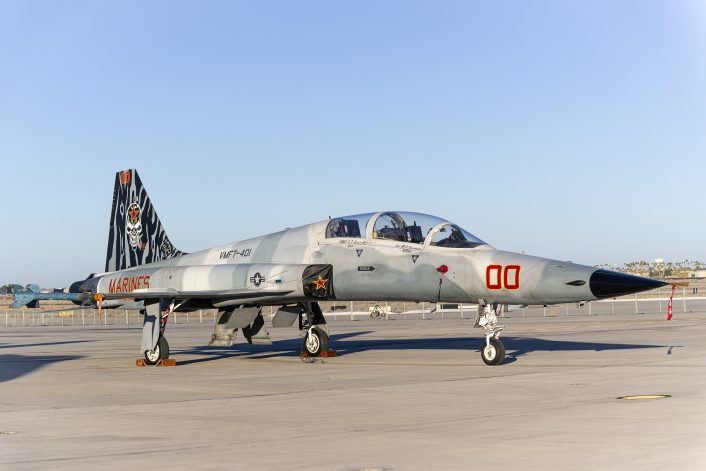
Switching gears now to the current. What is VMX-1’s mission for U.S. Marine Aviation? What aircraft are in the current inventory of VMX-1? Strictly from an F-35 perspective, how many F-35s are in the squadron, what type, and how many F-35 pilots are in the squadron? How often do you get to fly?
VMX-1 is charged with executing Operational Test of Marine Aviation systems and aviation related systems as well as doing tactics development, Science and Technology work, demonstrations etc. Our end user is the fleet, we are here to characterize these systems for the warfighter so they can be as lethal and effective as possible. We have at least one of almost everything the USMC flies. We currently operate F-35Bs, numbers fluctuate.
As for me, I am just getting back into flying so last week I got to fly three times, and as a side benefit, I get to fly with some of my other aircraft types from time to time. The first VMX bird I flew was the CH-53K, which has a great control system that reminds me of the F-35B a bit.
As Commanding Officer of VMX-1, can you please describe your role and responsibilities? How do you coordinate the operational test and evaluation on all the different types of aircraft within VMX-1? Is there a lead officer for each type of aircraft that reports into you? What group do you report up to?
Great questions. My Chief Operational Test Director oversees the projects division which coordinates test across the various types. Each model has a lead officer. VMX-1’s job is to advance the Commandant’s vision for Marine Aviation, and as a headquarters-controlled activity, I work directly for the Deputy Commandant for Aviation.
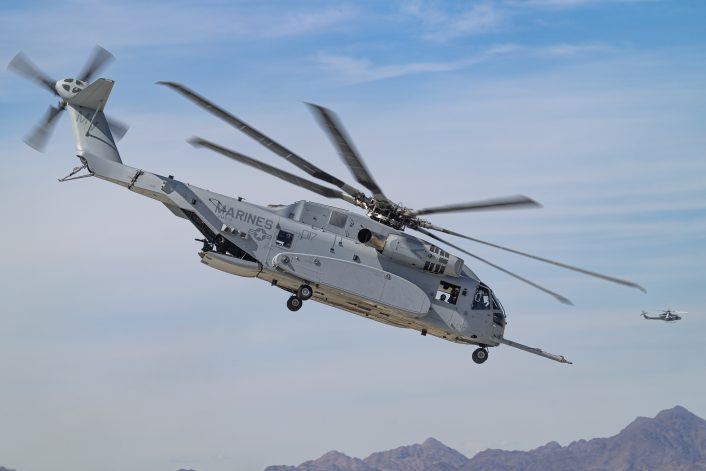
Can you briefly describe what a typical day is for an F-35 pilot in VMX-1? How often would they fly in a week, how often do they deploy away from MCAS Yuma? What would a VMX-1 F-35 deployment look to accomplish? Can you talk about any prior VMX-1 deployments that were memorable for you?
Lots of variation in that. The F-35 pilots support a variety of projects in addition to flying F-35, so depending on priority it might be a lot or a little. VMX-1 has deployed to the ship for sea-based exercises, all over the country to participate in test exercises that give us the environment we need to test the systems in an operationally representative location/scenario. I haven’t deployed with the squadron since I took over in October.
Staying on topic regarding the F-35, from an aircraft and weapons modernization perspective, is it possible to elaborate on what specific current testing and evaluation is taking place within the F-35 community? Is VMX-1 involved in Technology Refresh 3 (TR-3) testing, and Block 4 capabilities, for the F-35?
I can’t go into details on what we are testing right now, but I can say we are involved in operational testing of both TR-2 and TR-3 jets.
Okay, thanks, further question on the F-35. Is VMX-1 responsible for any of the USMC F-35C Operational Testing and Tactics Development, or is that function handled by VX-9 at Edwards, with input from U.S. Marine operational testers?
While VMX-1 doesn’t currently operate any F-35Cs, we collaborate with VX-9 to ensure USMC’s needs are covered. Beyond that, through the F-35 JPO (Joint Program Office), we coordinate Operational Testing across the enterprise including with the USAF 53TEG and 422TES. Because the aircraft are so similar we gain a lot through cross-service collaboration.
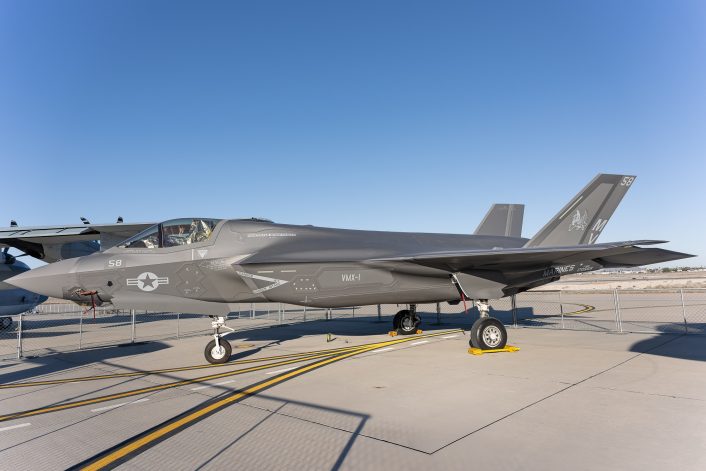
Recently the 2025 U.S. Marine Aviation Plan was released. In the latest long-term fleet plan, it spoke of a procurement profile which reflects an increase of F-35C squadrons in the Marine Corps to eight, effectively doubling the number of operational F-35C squadrons. Do you envision an impact to VMX-1 due to the larger number of F-35Cs within Marine Corps Aviation? Will you be taking on additional test and evaluation tasks for the F-35C?
I am not sure exactly how VMX will adapt in the future to effect the Commandant’s Aviation Plan, but I can promise that we will attempt to deliver what the fleet needs to be successful. We are still working through how we best support the future of Marine Aviation. Planning for testing that future, is one of our continuing tasks we focus on daily.
With VMX-1 and MAWTS-1 (Marine Aviation Weapons and Tactics Squadron One) both located at MCAS Yuma, can you describe how VMX-1 interfaces with MAWTS-1, as well as talk about the benefits of these two squadrons working together?
As we bring on new systems or evaluate existing systems and develop initial Tactics and Procedures for the fleet to use, we work closely with MAWTS-1 in a few ways. First, we include MAWTS-1 Instructors as fleet representatives when we are scoping test, evaluating systems, or discussing TTP (Tactics, Techniques and Procedures), recommendations. Second, we use the MAWTS-1 primary training forum, the Weapons and Tactics Instructor course, as an opportunity to do field representative tests and demonstrations in conjunction with MAWTS-1. Three, we support MAWTS-1 (and the fleet) with expert training to help maximize user familiarity when fielding new systems and software.
Since MAWTS-1 trains fleet instructors, our close association with MAWTS-1 helps get information disseminated to the fleet in a rapid and standardized way. Being co-located with MAWTS-1 has huge mutual benefit. We can fly MAWTS-1 IP’s (Instructor Pilot’s) in our aircraft so they can see what the next software will look like in their aircraft before it is fielded to the fleet. That helps them stay ahead of the fleet as instructors and gives us valuable insight into what may be fleet concerns.
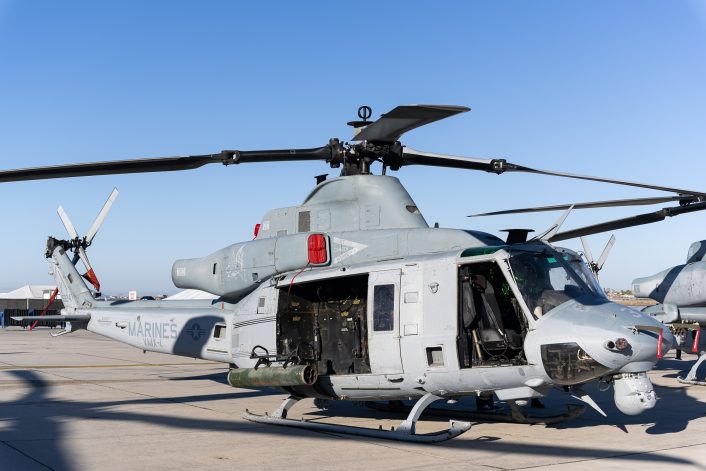
Lastly, what are your biggest challenges in managing and delivering innovative solutions for U.S Marine Corps Aviation to successfully confront emerging threats and conflicts around the globe?
There are so many opportunities. As the Marine Corps’ flying laboratory, we are involved in many projects to deliver on many promising technologies. The challenge is finding the ones that are ripe for fielding and separating the wheat from the chaff. We have the opportunity to support evaluations from pure experimentation all the way to fielded systems.
We don’t own the decision of what is ready, but the information we gather through deliberate test helps form the body of evidence for Marine Corps leadership to make wise choices for the warfighter. Once something is headed to the fleet, we can send a characterized system with initial tactics recommendations and best practices. It’s an important and fun challenge that the Marines of VMX-1 are excited to execute every day.
That is great, thanks very much for taking the time with us today, and for your illuminating answers.
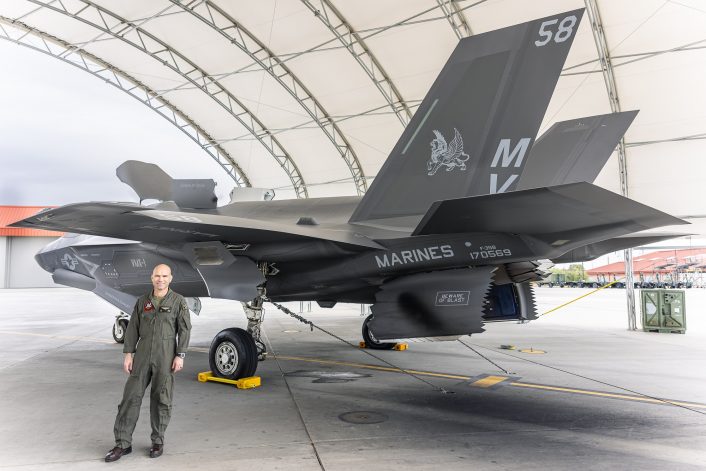
The Aviationist would like to send out thanks to Capt. Owen VanWyck, COMMSTRAT Director, MCAS Yuma, as well as Gunnery Sergeant Scott Roguska COMMSTRAT, MCAS Yuma, for all the hard work involved with executing a first-rate airshow.
In addition, a very special thanks to Colonel John “Ike” Dirk, Commanding Officer, Marine Operational Test and Evaluation Squadron One, for your patience and professionalism throughout the project.

